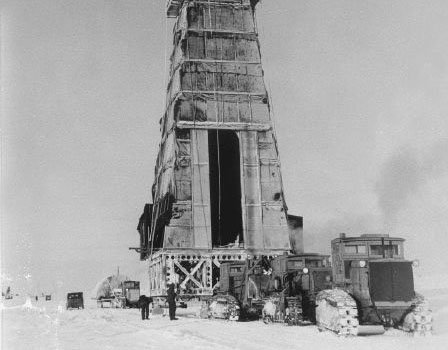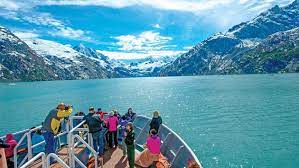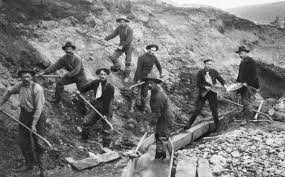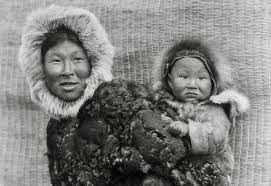Alaska’s natural resources have proved to be a benefit to the United States, thus proving the value of this purchase. Its economy has benefited from its natural resources as well from supplying jobs and business opportunities. Alaska’s mining industry produces petroleum, natural gas, gold, zinc, silver, sand and gravel. Alaska first discovered oil and natural gas in 1968 at Prudhoe Bay. Shortly after Gold was found in 1896 at Yukon, Alaska. Later in the late 1960’s zinc was found in Red dog Creek. Then silver was found in 1987 at Green Creek's Mine. Alaska’s oil mine has produced over 18 billion barrels of oil since the discovery of natural resources there. In Alaska, the oil industry accounts for one-fourth of employment and one-half of the economy. Since the discovery of oil in Alaska the oil produced has dropped about 75 percent since its peak in 1988. The oil and natural gas industry in Alaska pays over $3.1 billion dollars worth of taxes every year.
SEWARD'S FOLLY

Alaksa Map, Getty Images, 2017
Natural Resources

Oil discovered in Alaksa, 1968, Department of Energy Images

Commercial Fishing in Alaska, early 20th century, alaska.gov
Fishing
Alaska commenced its commercial fishing industry around the 1800's. It is one of the most abundant fishing regions in the world, producing about 60% of the nation's commercial fisheries. Alaska produces mostly cod, crab, flounder, and salmon. Alaska is also known for its well managed, sustainable, fishing industry. Alaska invested in 1959 to its sustainable fishing to insure their future income. Its diplomatic trade with Japan, China, Europe, and Canada are also something to note. Alaska's fishing industry has been a long time fuel to their economic growth. It produces more than $5 billion dollars in economic activity every year. It also provides over 50,000 jobs connected with fisheries.
Tourism
Alaska's local businesses depend on tourism to make money. Alaskan tourism first truly started in 1880 with a cruise line. In 1880 traveling to Alaska was almost as much as traveling to Nepal. Alaska attracts about 1.1 million tourists every year. As well as more than 126 million dollars in state revenue each year. Alaska tourism increased the cruise market by seven percent, the airline industry by one percent, and the highway market by thirteen percent.

Alaska modern day tourism, 2006, Travelpulse.images
Gold Rush
The Klondike also known as the Yukon gold rush had an important role in persuading many people that the Alaskan Purchase was a good thing. The gold was originally found in 1896. The gold was a positive thing for many but for the Yukon natives, it was not an ideal situation. Yukon natives caught new diseases, but the population of Alaska grew as people traveled to find gold. Even though gold was discovered in 1896, the conditions of Yukon were not ideal and the communication was slow so this did not become a big event until 1897. The extent of the miners was 30,000 people due to the long and treacherous conditions to make it to Yukon. This gold rush ended in 1898, but the effects lasted for a while. The gold rush was the first turn on the debate of the purchase for Alaska.

Klondike Gold Rush, 1899, History.com images

Natives in Alaska, 1783, alaskamagizine.images
Natives
The Alaskan native people were Inuits, Youpik, Athabascan, Unangan, and Tlingit when Russian explorers arrived to claim land in 1741. About 100,000 people were living in Alaska before Russia claimed the land as their own. Though a small number of Russians were sent to claim the land they overpowered the natives using cruel acts, such as taking the children of the leaders. In the end the native people had about half that amount they started with by the time of the United States purchase. When the US bought Alaska native people were not named US citizens until much later in 1924 when the Indian Citizenship Law was passed. During that time the native people had no rights, they could not vote, own property or file mining claims. In the 1860’s, missionary societies and the Beauro of Indian Affairs tried to eradicate the native people's languages, music, dance, religion, art, and lifestyles. Later in 1971, President Nixon seized 44 million acres of federal land, along with one billion dollars to Alaska's native people. Today, Alaska has a population of 740,000; of which 120,000 are native people to Alaska.